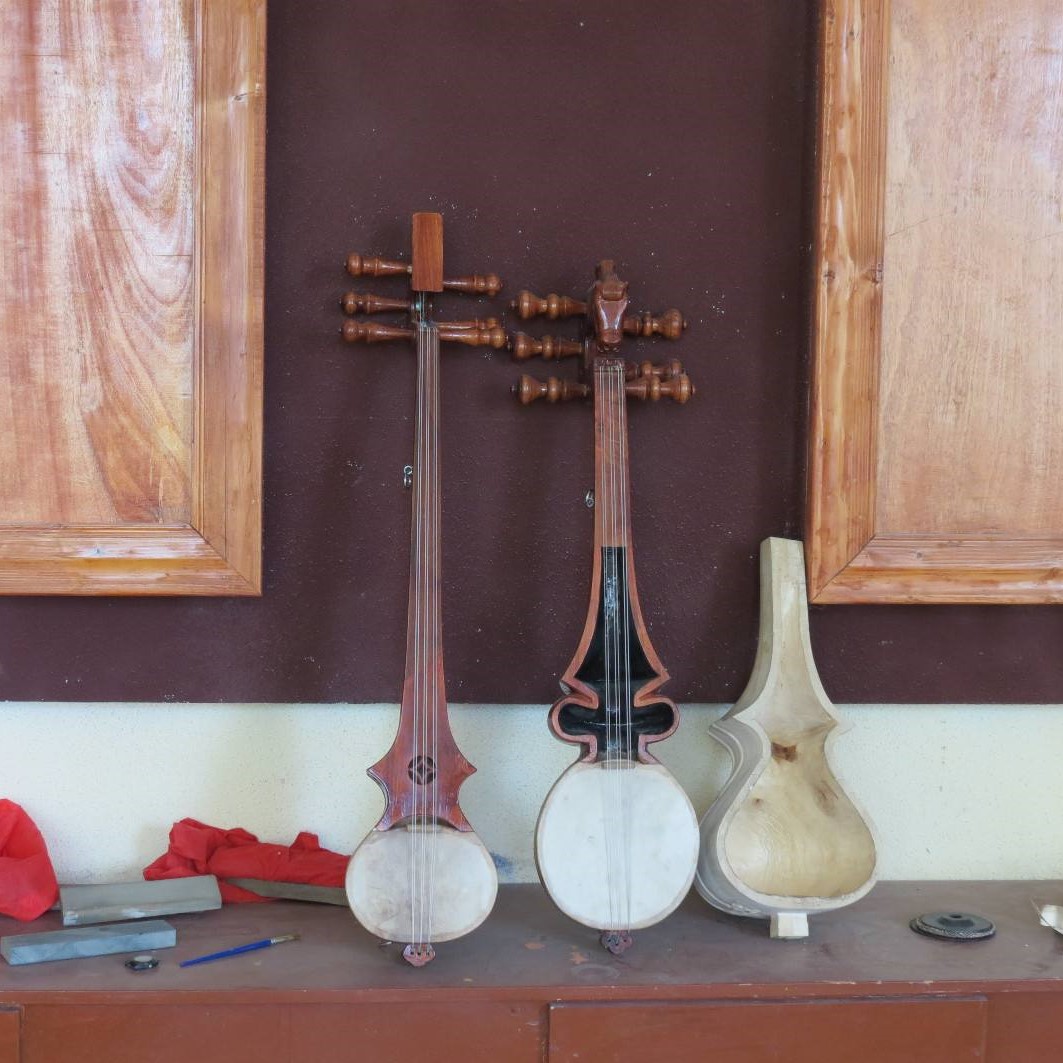Jamunian overview
 Zhamunian (pinyin: zhā mù nián) has a long history and different origins. It evolved from a multi-stringed musical instrument introduced to Tibet from ancient India. According to the records of the "Tibetan Wangtongji" in Genyu, Songtsan Gampo once gave a banquet. There are records of artists playing musical instruments, and it is judged that Jamunian was introduced to Tibet from the mainland in the Tang Dynasty, and has a history of more than 1,000 years. However, most Tibetan scholars believe that Jamunie originated in Tibet and was a musical instrument created by the Tibetans themselves.
Zhamunian (pinyin: zhā mù nián) has a long history and different origins. It evolved from a multi-stringed musical instrument introduced to Tibet from ancient India. According to the records of the "Tibetan Wangtongji" in Genyu, Songtsan Gampo once gave a banquet. There are records of artists playing musical instruments, and it is judged that Jamunian was introduced to Tibet from the mainland in the Tang Dynasty, and has a history of more than 1,000 years. However, most Tibetan scholars believe that Jamunie originated in Tibet and was a musical instrument created by the Tibetans themselves.Jamunian is a Tibetan plucked musical instrument with six strings, so it is also called the six-stringed qin by the Han people. Its timbre is rich and loud, and it is the main accompaniment instrument for Tibetan classical songs and dances Nangma and folk songs and dances. It can also be used for instrumental ensemble or solo. In modern times, some people have reformed Jamunie to make it meet the needs of playing various pieces of music.
The traditional Jamunian is composed of a resonance box, a headstock, a piano rod, a peg, a horse and a string (pictured). These parts are also commonly known as Tibetan folk. For a long time, the Jamunian has maintained its simplicity. The shape of the piano, and some piano bodies are made of two pieces of wood inlaid and bonded together to form a whole, and the folks also call the upper section the mother and the lower section the father. The exterior of the violin mostly maintains the natural color of the wood, and some paints are brown or reddish brown, and the film mostly maintains the original color or is dyed dark green.
- Chinese name:Jamunian
- type:musical instrument
- type:Bass Jamunian, etc.
- alias:Concertina, Jamunie, Zhanian
overview of other similar instruments
- sanyanxiao overview
- Daguangxian overview
- Leiqin overview
- hahao overview
- yandundagu overview
- Han Xiaozheng overview
- Fang Xiang overview
- guanzi overview
- zhuqin (Dao Qin) overview
- zhuiqin overview
- bangzi overview
- three-stringed piano overview
- Gehu overview
- xiao overview
- xiaokonghou overview
- Konghou overview
- Sheng overview
- suona overview
- hulusi overview
- gushao overview
 渝公网安备 50010702504639号
渝公网安备 50010702504639号